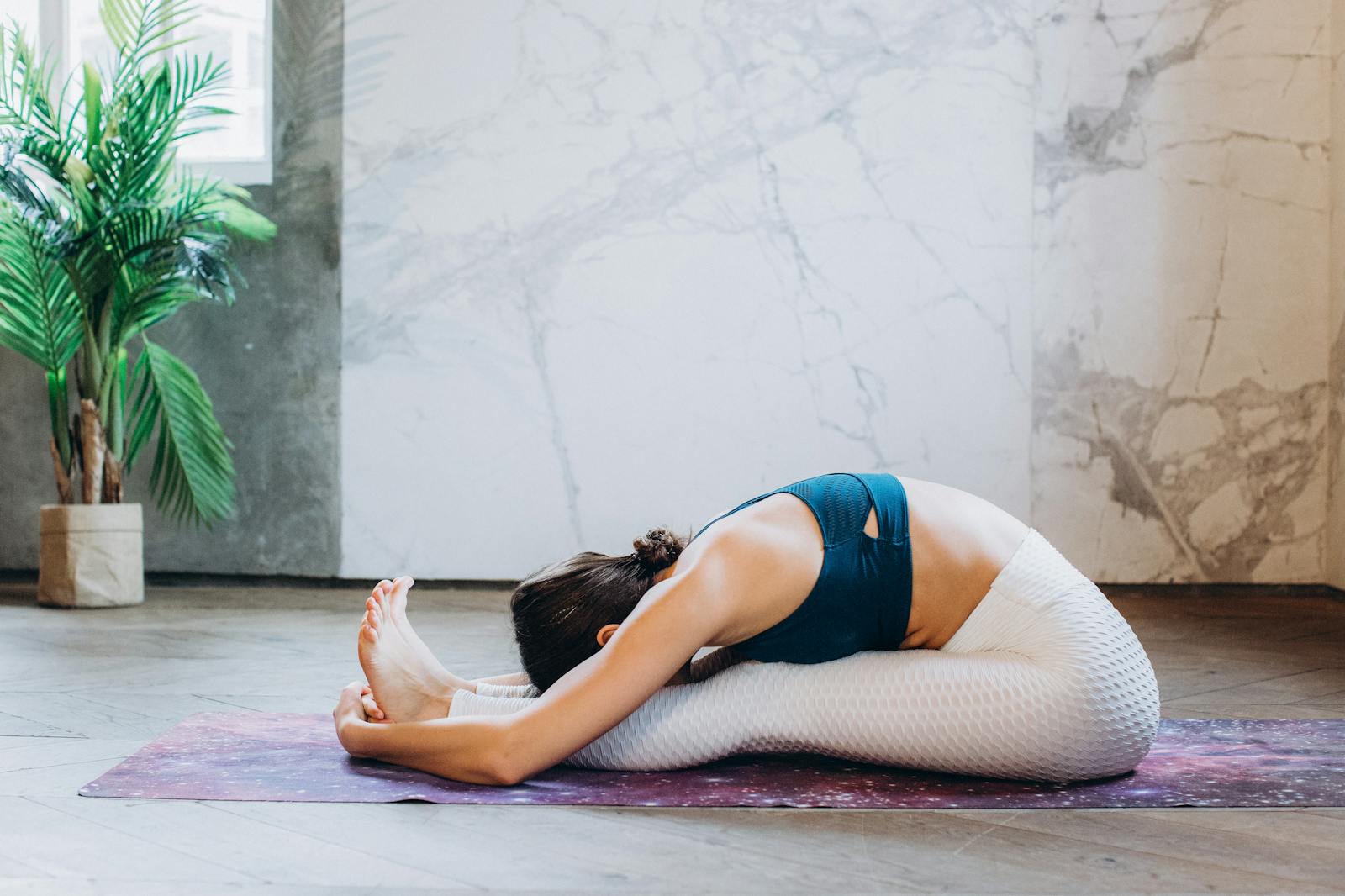Tips for Forward Folds

Many poses fall into the category of forward folds, including Uttanasana (Standing Forward Fold), Upavishta Konasana (Wide Legged Seated Forward Fold), and Apasana, or Supine Knees to Chest, among others. All of these postures bring the body into calm and steadiness; the sympathetic nervous system is pacified and the parasympathetic nervous system takes over. Combining these with breath work serves intensify the sensation of relaxation. For this reason, these poses are obviously important to include in practice, but they must be done with thought. Once, I injured myself going in and out of seemingly simple Janu Sirsasana and was subsequently sidelined for almost six weeks. To avoid that, follow these tips whenever you engage in a forward fold.
All forward folds are accomplished by working the muscles of the legs and lower back. The extent of involvement of each body area can be partially controlled by moving the knees. If the knees are bent, the fold will take place in the back of the legs, particularly if the back is held straight. Conversely, keeping the knees straight will force unwanted movement into the lower back and upper buttocks. Use the position of your belly to determine how much to bend the knees: when practicing, keep the stomach area pressing into your thighs. If you can’t do with without bending the knees, that tells you that you’re using your lower back muscles to accomplish the task – something you don’t want to do.
Match the breath to the movement to increase the relaxation response. When you are opening the body, breathe in; when closing, breathe out. For Uttanasana, breathe in as you bring your arms up and breathe out as you bend your knees and cascade the torso down. Let the breath support the pose, straightening your back on the inhale and moving it closer to the legs on the exhale.
Use this technique in any forward fold, whether standing, sitting, or on your back. Keep the torso connected to thighs, with the chest pulling forward in an imitation of Bitilasana-Marjaryasana, or Cat-Cow pose. If this means bending the knees, so be it; you’ll protect your lower back as your muscles stretch -- out on their timeline, not on the mind’s. These asanas thus help us cultivate patience and humility; as our bodies become more flexible, we are then also able to cultivate gratitude.
When practicing, see if you can stay with the sensations rather than tuning out and going on a mental journey. Focus on the breathing, directing it to the various muscle groups. You might also cultivate an attitude of surrender as you open to the experience and acknowledge what you feel. This added exercise has many benefits off the mat – any practice in accepting what is rather than what we think should be there allows us to live differently. This is one small way that we take our practice off the mat and into the world.
All forward folds are accomplished by working the muscles of the legs and lower back. The extent of involvement of each body area can be partially controlled by moving the knees. If the knees are bent, the fold will take place in the back of the legs, particularly if the back is held straight. Conversely, keeping the knees straight will force unwanted movement into the lower back and upper buttocks. Use the position of your belly to determine how much to bend the knees: when practicing, keep the stomach area pressing into your thighs. If you can’t do with without bending the knees, that tells you that you’re using your lower back muscles to accomplish the task – something you don’t want to do.
Match the breath to the movement to increase the relaxation response. When you are opening the body, breathe in; when closing, breathe out. For Uttanasana, breathe in as you bring your arms up and breathe out as you bend your knees and cascade the torso down. Let the breath support the pose, straightening your back on the inhale and moving it closer to the legs on the exhale.
Use this technique in any forward fold, whether standing, sitting, or on your back. Keep the torso connected to thighs, with the chest pulling forward in an imitation of Bitilasana-Marjaryasana, or Cat-Cow pose. If this means bending the knees, so be it; you’ll protect your lower back as your muscles stretch -- out on their timeline, not on the mind’s. These asanas thus help us cultivate patience and humility; as our bodies become more flexible, we are then also able to cultivate gratitude.
When practicing, see if you can stay with the sensations rather than tuning out and going on a mental journey. Focus on the breathing, directing it to the various muscle groups. You might also cultivate an attitude of surrender as you open to the experience and acknowledge what you feel. This added exercise has many benefits off the mat – any practice in accepting what is rather than what we think should be there allows us to live differently. This is one small way that we take our practice off the mat and into the world.
You Should Also Read:
Janu Sirsasana
Half Sun Salutation Sequence
Uttanasana and Ardha Uttanasana

Related Articles
Editor's Picks Articles
Top Ten Articles
Previous Features
Site Map
Content copyright © 2023 by Korie Beth Brown. All rights reserved.
This content was written by Korie Beth Brown. If you wish to use this content in any manner, you need written permission. Contact Korie Beth Brown for details.







